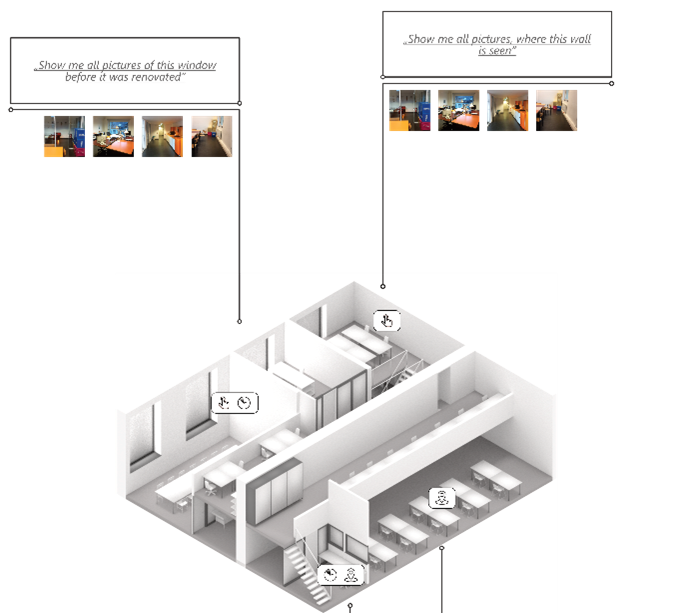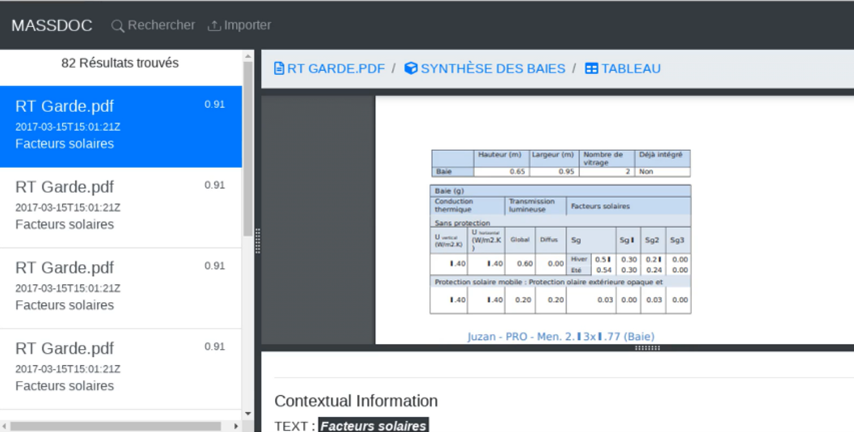In a context where digital and remote exchanges are becoming increasingly important, the European BIM4Ren project has launched a series of webinars on the topic of BIM in energy renovation works. This post is a continuation of this effort and is part of a series to make easily available the discussions, knowledge, and tools produced during these webinars if you couldn’t join us live!
You can watch past webinars here.
The third BIM4Ren webinar took place on February 10th. In this webinar, we presented different tools that can be used to create a BIM model of an existing building. But for this, first we need to stop thinking about BIM models as a 3D model: our intention wit this webinar is to show that what makes BIM great is not the ‘Wow’ effect caused by 3D but the richness of the information the model contains. Having a 3D model does not mean it will automatically tell you that the external façades of the building are made of bricks with an internal insulation of rock wool. A very nice 3D model will not give you information by default on the presence of asbestos. While a 3D model can be helpful in better visualizing a building, in particular for non-experts, information related to the thermal performance of the different building components are essential to achieve an accurate thermal performance assessment of the building and to better identify renovation actions.
We need to stop thinking about BIM models as a 3D model: what makes BIM great is not the ‘Wow’ effect caused by 3D but the richness of the information the model contains.
We kicked of the webinar with Pierre Bourreau (Nobatek/INEF4), who gave a brief introduction on the BIM4Ren project and on the previous webinars, remembering the main concepts and the goals that are driving us. He then explained the starting point for Webinar #3, by reviewing a 3D model of an existing building generated by one or many of the tools presented during our Webinar #2, and addressed the question: how can you enrich this model with properties required for a renovation towards an energy-efficient building? As it always happens in a BIM project, we must first know what is the data we need to run this renovation. In an energy-focused project, it will be thermal data: thermal conductivity/resistance, thermal bridges, solar shadings, heating systems, set points… All this information can be collected in different ways. In BIM4Ren, we differentiate between two modes of gathering this information: on-site and off-site.

Link on-site images to the BIM Model with CAIA
Oliver Schulz (RWTH Aachen) presented the CAIA (Context-Aware Image Acquisition) tool which can be used when visiting a building. The tool is used on a mobile device with ARcore, and tracks the position of the user in the building, on top of a 2D plan; the auditor or the person in charge of collecting information on-site can then take pictures which can be enriched with information, such as a status indicator, a comment, or an assignment to another person. Since the movement of the user is getting tracked, the location in the building is saved to the images as well. The collected data is distributed via a server which is built on the BCF API, a buildingSmart standard. Once a 3D BIM model of the building was created, this latter can be aligned with the initial 2D layout used, so the images become available on the BIM model itself. Such a tool can be used both at the exploitation phase, to ease and speed-up the maintenance of the building, and for auditors, to assess the status of the building, to detect incidences, degradations on different elements, with proof of evidence, leading to a digital audit. In the specific case of BIM4Ren, CAIA will be used by occupants, to ensure a partial audit of the building, and by auditing, who can collect information such as the reference to the HVAC systems installed, or the degradations.
Massdoc: a semantic search engine

Off-site tools mostly deal with documentation, the idea being to digitize, or better said to ‘BIMify’, any available resource. Two software of the kind were presented. First, Nathalie Charbel (Nobatek/INEF4) presented Massdoc, a text documents semantic search engine. When starting a renovation project, a large set of documents can be at the disposal of the project team, as a record of the building life. The difficulty to exploit them increases with the number of documents available. Massdoc offers a solution to this challenge. As a first step, users can upload all their documents, which are internally parsed and annotated. Then when looking for specific information, Massdoc can be used as a search engine on the overall corpus of documents that was uploaded, returning information ranked according to a relevance score. While this may sound like performin “Ctrl+F” on a set of documents, Massdoc is doing much more, considering linguistic relations in the AEC domains like synonyms (for instance, ‘thermal transmittance’ and ‘U-value’) as well as related concepts (hypernyms, like ‘openings’ being a general concept encompassing ‘windows’, ‘doors’…). The tool will be integrated on top of the OSAP platform (which offers a document storage service) so as to ease the search for information for the duration of projec. Within the scope of our project, it will be tested in particular on retrieving thermal and energy-related properties of building products, to ease the creation of associated BIM objects in a catalogue of objects.
Scan your bills easily with Utility Bill Reader
Finally, Giulia Barbano (IES) presented the Utility Bill Reader, an automatic bill scanning tool. When starting a renovation project, the very first step is to know how the building is performing. While an energy audit can be performed to have an expert inspecting the building and its defects, it is a costly process, which will require consumption information anyway. The Utility Bill Reader helps users process large sets of bills in a quick, easy, error-free and privacy-conscious way. The Utility Bill Reader automatically detects the key figures of the bill (reference period, amounts, costs). Then, the user can review the values, to correct them if necessary. Once consumption information is extracted, it can be downloaded to CSV or be imported into iSCAN, IES’ cloud data analytics solution, and made available via API to other tools in a linked data environment, such as the BIM4REN OSAP. Here, it is possible to continue adding information from utility bills as it becomes available over time, helping the user increasingly build knowledge of the building performance. Finally, the data output by the Utility Bill Reader is just the consumption and periods, in compliance with the GDPR principle of data minimisation (i.e. only collect the data that is strictly necessary for the analysis).
The webinar ended with mentioning additional tools that are being developed within the BIM4Ren project to get the best of all the information available from documents and during a visit of a building. Through this toolbox, BIM4Ren offers the possibility to ease the creation of a rich BIM model of an existing building. This webinar closes the presentation of the ‘Data collection phase’, and in the next webinars we will see how all this information can be structured and consolidated to actually lead to a model that will be the basis for playing with different renovation scenarios.
If you find this summary interesting, you can now see the full recording of the webinar below!